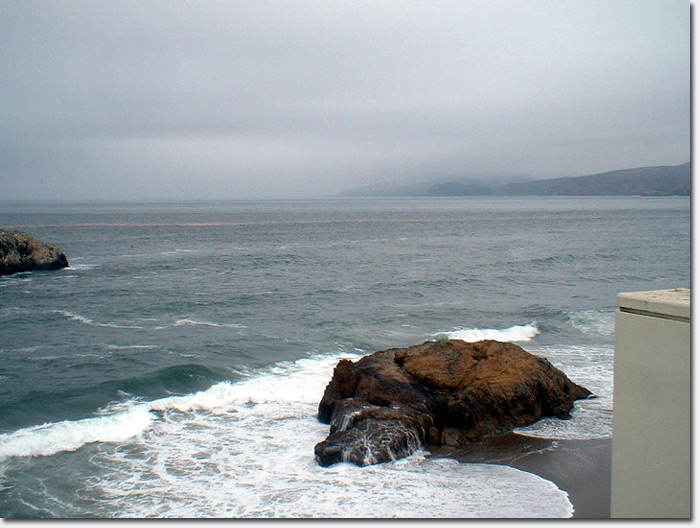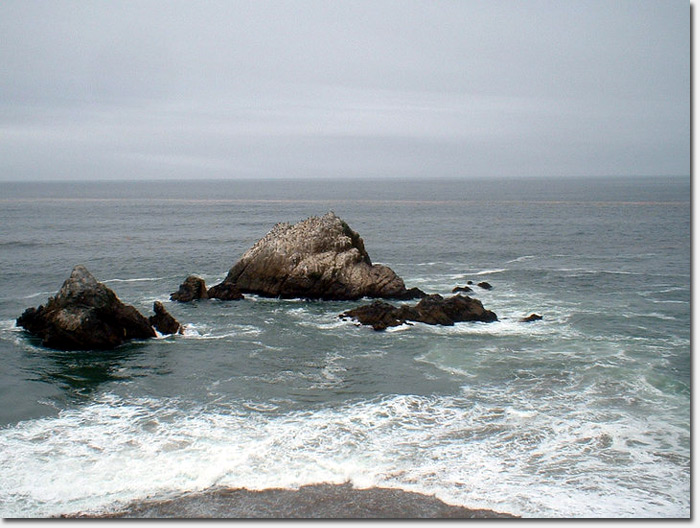
A little marine biology lesson for your Sunday… Some diners at the Cliff House today noticed a strange red streak out in the Pacific Ocean, so the restaurant posted some photos on their Facebook page and asked, “Is it a red tide, a phosphorescent toxic spill, or a natural event? The glowing line stretches from the Golden Gate Bridge to the Zoo.”
Thanks to the power of social networking they got a quick response – it’s an algal (algae) bloom. According to Wikipedia:
An algal bloom is a rapid increase or accumulation in the population of algae in an aquatic system. Algal blooms may occur in freshwater as well as marine environments. Typically, only one or a small number of phytoplankton species are involved, and some blooms may be recognized by discoloration of the water resulting from the high density of pigmented cells.
Although there is no officially recognized threshold level, algae can be considered to be blooming at concentrations of hundreds to thousands of cells per milliliter, depending on the severity. Algal bloom concentrations may reach millions of cells per milliliter. Algal blooms are often green, but they can also be other colors such as yellow-brown or red, depending on the species of algae.
Of particular note are harmful algal blooms (HABs), which are algal bloom events involving toxic or otherwise harmful phytoplankton such as dinoflagellates of the genus Alexandrium and Karenia. Such blooms often take on a red or brown hue and are known colloquially as red tides.
No word on whether this one is considered a harmful red tide, but one Facebooker commented that the Coast Guard has been keeping an eye on it.
Sarah B.

